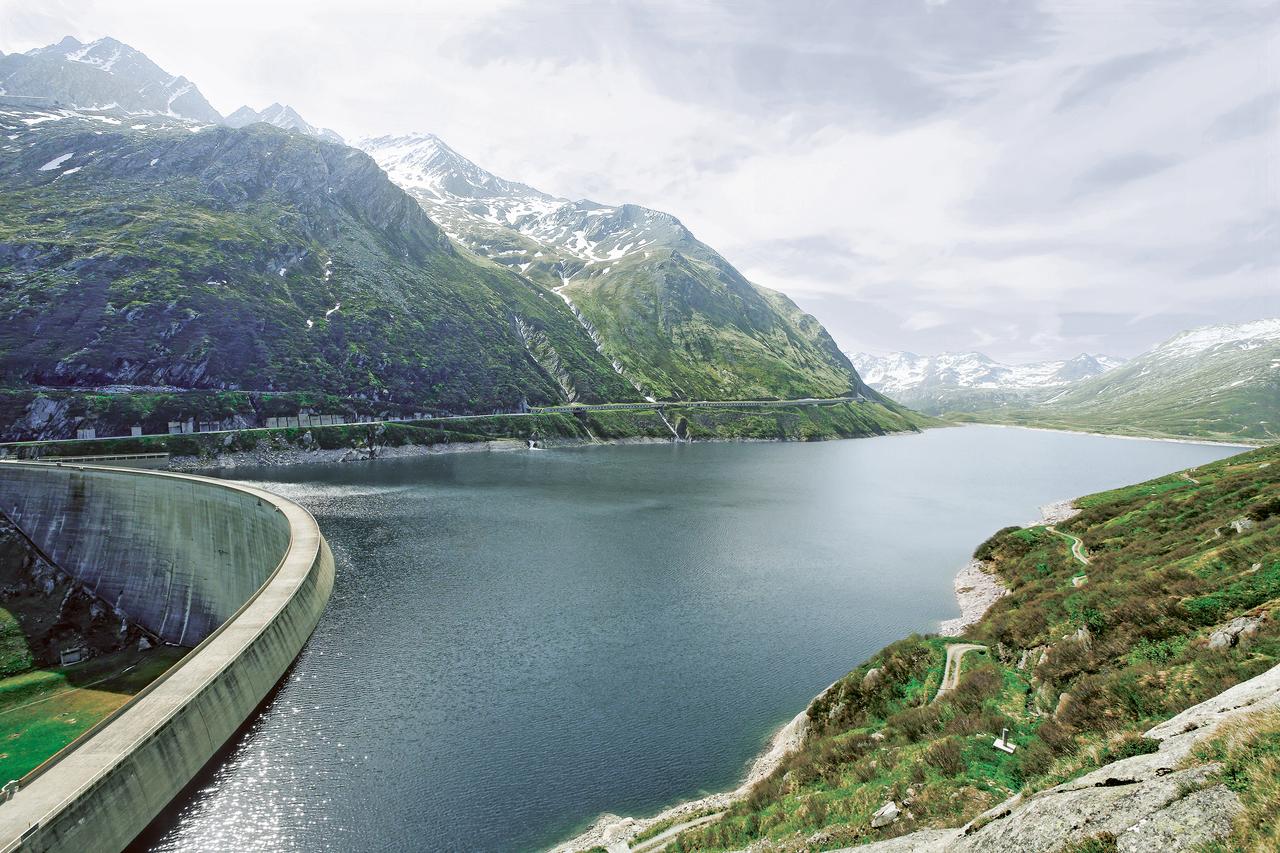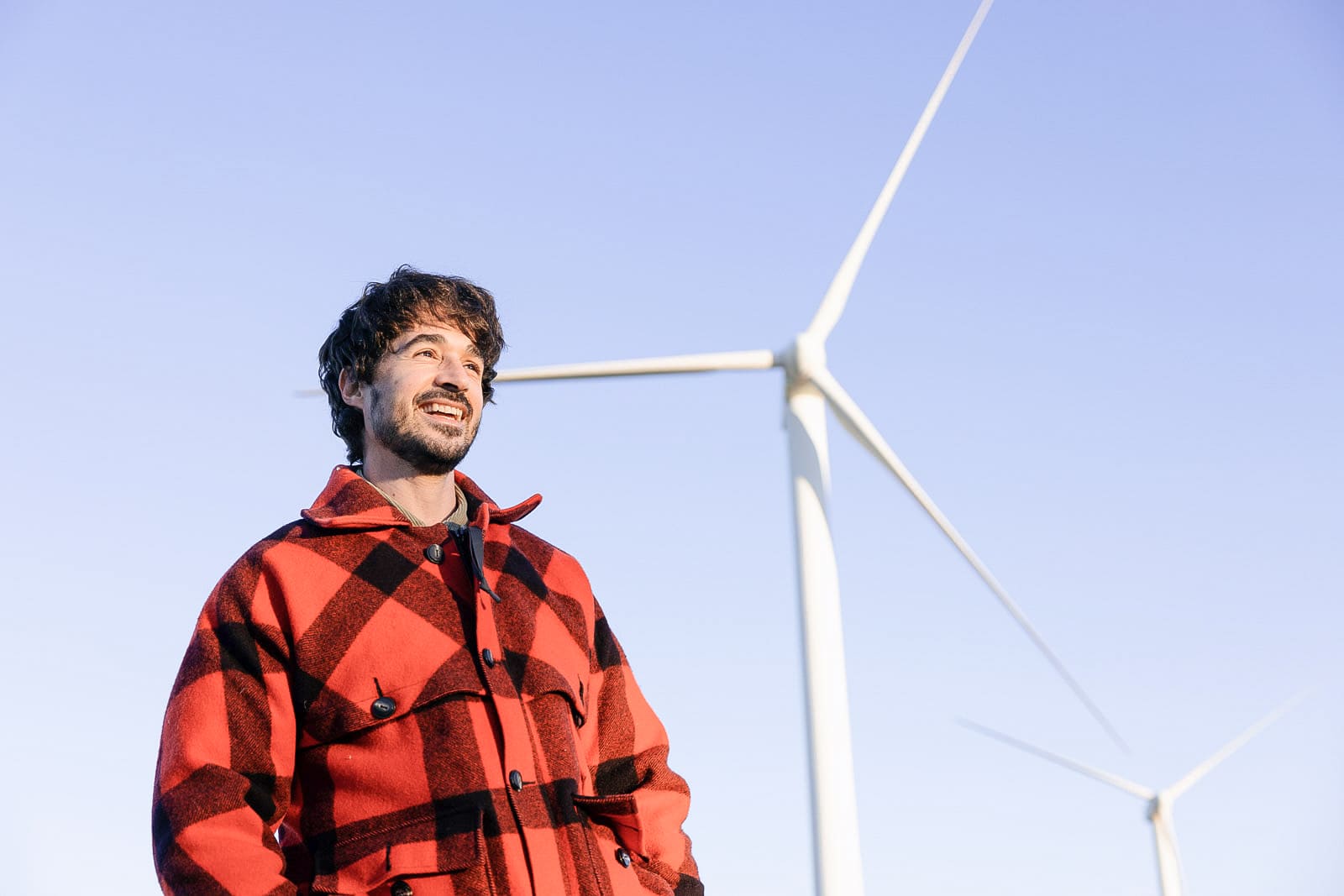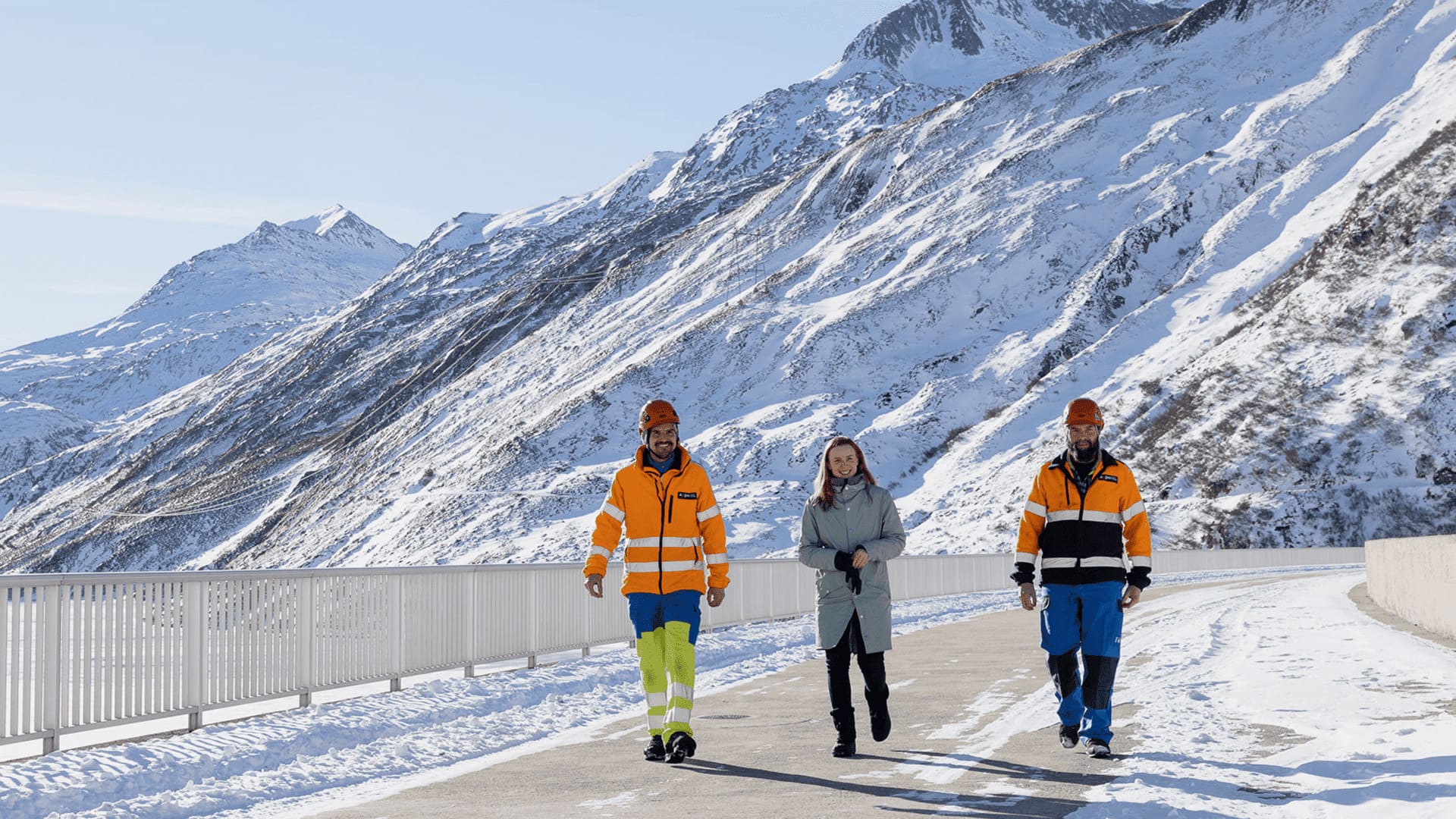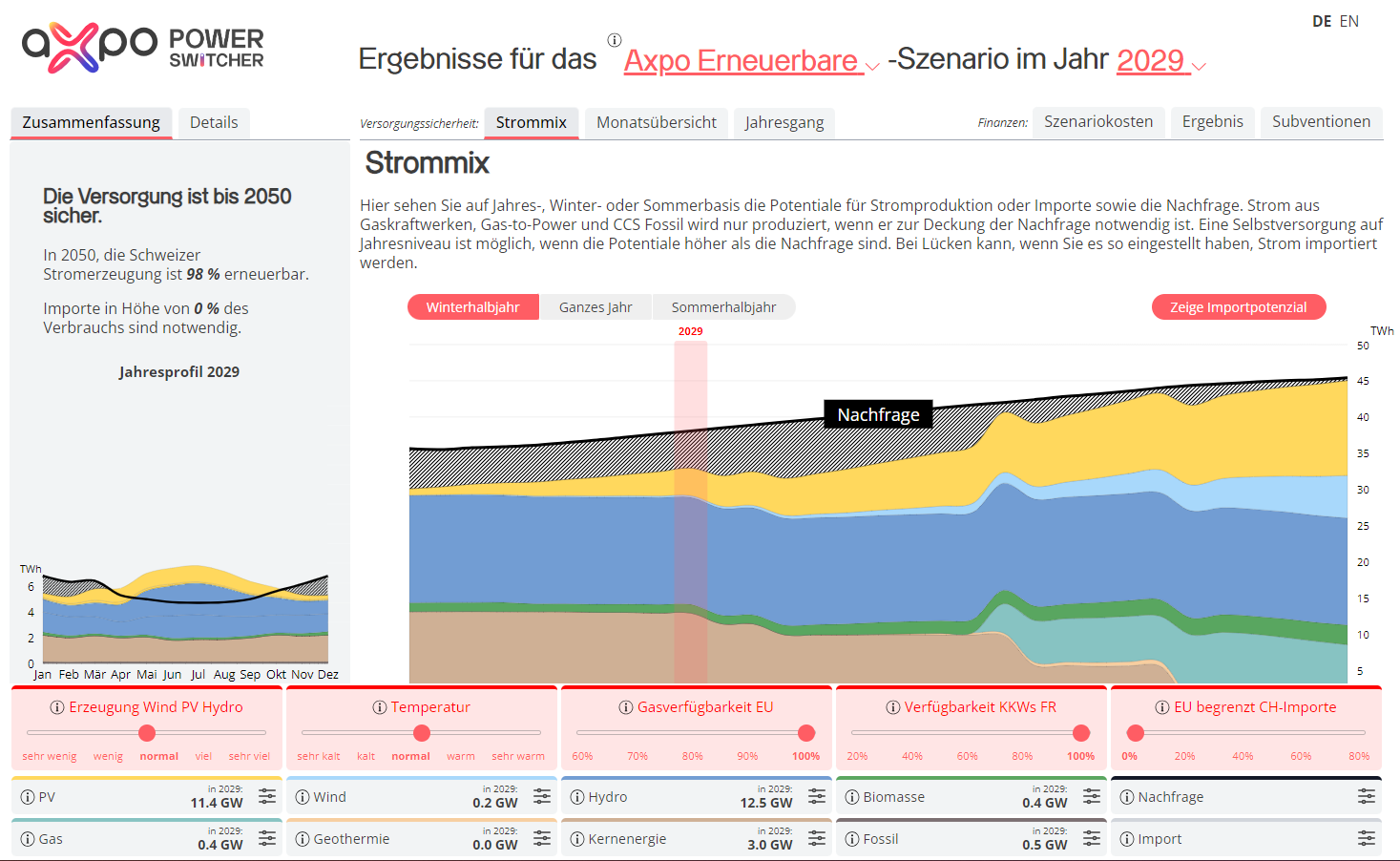17.04.2023 | The ‘site dependency’ criterion is slowing expansion
Solar power, not blanket bans
Photovoltaics are a key element in Switzerland’s future power mix. Yet large-scale ground-mounted installations still face regulatory hurdles, particularly the ‘site dependency’ rule. In defining future framework conditions it is important that we avoid any blanket bans that would slow the expansion of renewable energies.
There are various future scenarios for Switzerland’s power mix, but they all have one thing in common: photovoltaics (PV) play a key role (see Axpo Power Switcher). Parliament also seems to agree that renewable energies (without hydropower) need to expand from the current value of around 6 TWh to 35 TWh by 2035 – and photovoltaics are seen as having the greatest expansion potential by far.
When you look at current expansion efforts, it becomes apparent that it is primarily small-scale roof-mounted PV systems that are being installed. But that’s not because they’re cheaper; on the contrary – without the economies of scale a small system is more expensive than a large installation per kilowatt of output by a factor of 2 to 2.5. Instead, one key reason is that there are no major hurdles for installing systems on roofs, while large ground-mounted installations, for instance, are often not even eligible for approval.
The hurdle of site dependency
But why is it that large ground-mounted installations are generally not eligible for approval? It’s because space requirements mean that most are erected outside of building zones. To get them built in spite of this, you need an exemption approval which, under the Spatial Planning Act, requires a successful outcome following the weighing up of interests as well as ‘site dependency’. While every installation counts from a security of supply perspective, on a case-by-case basis it is difficult to prove why an individual PV installation has to be erected at a certain location and not elsewhere – in other words, why it is ‘site-dependent’. After all, the sun shines everywhere. So when applications are presented to approval authorities or objections are brought before courts, there is a high probability that site dependency will be denied, and the installation turned down. That applies even when an actual weighing of interests between energy generation and environmental protection results in a favourable outcome for the installation.
Legislators are introducing improvements
The amendment of the Spatial Planning Ordinance on 1 July 2022 provided the first impetus by defining PV installations on existing infrastructure, on dams and agricultural surplus areas outside the building zone as site-dependent. Parliament has also acknowledged the problem and in the emergency federal act passed in autumn 2022, it laid the foundations for the approval of alpine ground-mounted PV installations. A key aspect of these provisions, along with funding and general overarching interests, was that all ground-mounted PV installations covered by the law would also be considered site-dependent. However, the emergency federal act is only valid until the end of 2025, which means a replacement solution is urgently needed for further projects, some of which may be delayed. Parliament is currently deliberating on the ‘consolidation bill’, which would have to include this replacement solution. But there is an apparent tendency towards a more restrictive definition of site dependency than the emergency federal act allows for. This means we could end up with no replacement solution at all. Site dependency would be linked to conditions like ‘less sensitive areas’ and a simple grid connection. Within usable agricultural land, this criterion would be fulfilled if the installation also offered benefits for agricultural production.
Alternative approaches
This raises the fundamental question: is site dependency a suitable prerequisite for renewable production facilities like PV? And could it not be assigned on a general basis, or at least with less restrictive conditions? This would still leave the second prerequisite for an exemption approval, the weighing up of interests, and that would still decide in each case whether an installation was expedient and thus eligible for construction.
In addition, federal, cantonal and municipal authorities could pre-emptively amend their plans to show areas within their territory that would be appropriate for large-scale PV facilities and define special building zones for electrical production facilities. No exemption approval would be required in these areas, which means the criterion of site dependency would be rendered relatively superfluous.
This situation isn’t just a problem for PV installations, but other renewable technologies as well. Hydropower, wind power, biomass and hydrogen are confronted with similar barriers (site dependency or other construction bans). As a general rule, it is important that framework conditions avoid blanket exclusion of renewable energies from certain areas. Whether, for example, an installation affects a protected area in an individual case is something that can be determined in the weighing up of interests. Blanket bans, on the other hand, may well make it harder to reach expansion targets for renewable energies and render the whole process significantly more expensive.




.jpg)





